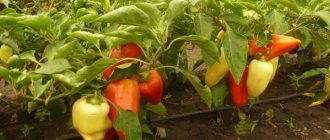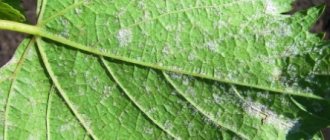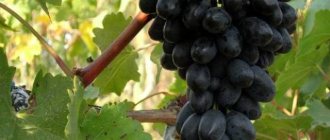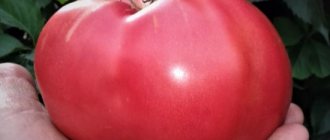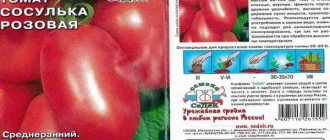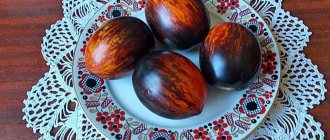The Muromets grape variety fully lives up to its name - it is a high-quality domestic variety with great endurance. The frost resistance of grapes, judging by the reviews, is even higher than in the official description. The berries do not have an original or exquisite taste, but they are sweet and large, and the harvest volumes are decent. The variety should be defined as reliable, problem-free and of high quality.
Muromets grapes: variety description
The grape bushes are vigorous, with a massive trunk and strong branches. The flowers are bisexual. Amethyst, Moldova and Count of Monte Cristo also have bisexual flowers.
- The leaves are medium to large in size, five-lobed (or three-lobed), serrated along the edges, 35-40 grams each . The central blade is elongated. The leaves are light green in color with light, pronounced veins.
- The clusters are medium to large in size, conical in shape, medium density. The weight of each vine is about 400-500 grams . When grown on nutritious soil, in a mild climate and with proper care, the weight of a mature vine can reach up to 800-1000 grams .
- The berries are very large, oval-round in shape, dark purple or dark red in color with a dense waxy coating. The weight of each berry is up to 4-5 grams, 2-2.3 cm in diameter. The seeds are small, 2-4 in each berry. The skin is thin and cannot be felt when eating. Monarch, Aleshenkin's Gift and Nadezhda Rannyaya can also boast of large berries.
- The pulp is fleshy, crispy, sweet with a slight sourness, the aroma is subtle and almost unnoticeable. Ripe grapes contain up to 17-18% sugar content with an acidity of 4.4 g/l.
Photo of Muromets grapes:
Comparison with analogues
Let’s compare “Muromets” with similar large-fruited varieties.
| Sign | Variety | |||
| Muromets | Furor | Laurent | Attica | |
| Ripening period | 100-110 | 105-110 days | 110-115 days | 115-120 days |
| Frost resistance | Up to -26 °C | Up to -25 °C | Up to -23C | Up to -23C |
| Yield per bush | 15 kg | 15-30 kg | up to 50 kg | 15 – 20 kg |
| Bunches | 500-1000 g | 900 g | 500 g - 2 kg | From 700 g to 2 kg |
| Taste | Harmonious, with a slight taste of black cherry and notes of “rose petals” | Nutmeg-fruity aftertaste | Fruity notes | Fruity notes |
| Color | Dark blue | Dark purple, almost black | Dark blue | Deep purple |
| Disease resistance | High | High | Above average | Average |
| Shelf life | 1-2 months | A few months | 1 – 2 months | Up to 2 months |
| Sugar content | 18-20% | 21-23% | 18-19% | 16 – 19% |
| Acidity | 6-9 g/l | 5-7 g/l | 6-6.5 g/l | 5 g/l |
History of selection and region of breeding
Muromets appeared thanks to the work of breeders I.M. Filippenko. and Shtilina L.T. The variety was bred as a result of crossing Pobeda with Severny in the Central Glossary named after. I.V. Michurina in 1962.
It has successfully passed tests and is suitable for cultivation in different regions of Russia and neighboring countries.
Thanks to good adaptation, frost resistance and endurance, Muromets quickly spread among amateur winegrowers even in the northern regions where grapes are grown.
The varieties Alexa, Isabella and Pink Flamingo are also extremely frost-resistant.
History of creation
This variety was created by professionals in their field, scientist breeders. In 1962, the first vines from the Severny and Pobeda varieties were grown. Creators Ilya Muromets - I.M. Filippenko and L.T. Shtin. The project was patronized and worked on by the All-Russian Research Institute of Genetics and Selection of Fruit Plants named after I.V. Michurina. The Central Genetic Laboratory sheltered scientists. There was the necessary equipment to control the experiment and the results obtained. Thus, the optimal combination of parent vines was selected, and the desired one was found - a worthy competitor to other types of grapes.
Care instructions
- Muromets is distinguished by high yields. According to recent studies, 13-16 t/ha can be harvested. Each fruiting bush brings 14-15 kg. berries;
- As a rule, there are no problems with reproduction and transplantation;
They take root quickly and after planting they begin to produce almost all shoots on which inflorescences form.
We pay special attention to this, since during the development of the vine it is necessary to remove excess inflorescences in a timely manner. Their size and quantity may be too large. The ripening of shoots in Muromets often occurs until the end of the annual growth.
We draw the attention of gardeners to the fact that there should be no more than 40-45 of them on each bush. Regulatory pruning is recommended for 9-10 eyes.
It is important to monitor the load that falls on each bush. Heavy branches break easily under the weight of the grapes. Sometimes the plant does not have enough strength for the vine to ripen fully. This negatively affects the yield and taste of berries; Many gardeners prefer Muromets not only for its good taste, but also due to its decorative appearance. Large leaves are also a distinctive feature of the variety.
At the same time, the gardener needs to pay attention to the fact that their value will depend on the climate, soil fertility, the amount of fertilizing and abundant moisture.
If you want to decorate your area with a beautiful hedge, you need to try to give the plant proper care and attention. Pay attention to the time and weather conditions when you plan to harvest. For successful transportation and long-term storage, grapes should be removed only in dry, warm weather.
This is also a favorable time for drying grapes (preparing raisins). In rainy weather, the berries can be collected for homemade preparations. Berries picked in such weather often crack during transportation and are poorly stored.
- Muromets has excellent frost resistance and can withstand temperature changes down to -25 -27 degrees. At the same time, in our region it is recommended to grow grapes as a cover crop.
Advantages and disadvantages
Let's take a closer look at the strengths and weaknesses of the variety in order to get a more complete impression of it.
- The percentage of fruitful shoots in this case is high - at the level of 70-90%;
- Early ripening times are liked by all gardeners without exception, especially those living in the north.
- The bisexual properties of flowers make it possible to do without artificial pollination.
- Cuttings take root well in almost any soil.
- The ripening of the shoots is complete, but for rationing purposes it is necessary to leave 40-50 ovaries on the bush, no more.
- The bunches and berries grow large and beautiful.
- The taste of the fruit is soft, pleasant, balanced.
- The harvest, collected in dry weather, is perfectly stored and transported. Note that fresh grapes can be stored even for a month or two, but only if in cool conditions.
- The grapes are easily and without problems transported, which makes them interesting for industrial cultivation.
- The frost resistance of the crop is at a high level - without shelter the vine will withstand cold temperatures down to -25-26 degrees. The variety is resistant not only to frost, but also to drought.
- The plant has genetic resistance to mildew.
- Berries are not affected by birds
Minuses
There is a tendency to peas, which manifests itself in cool climates
When growing a variety, it is necessary to annually remove attention to standardization. Otherwise, it is unlikely that you will be able to get a good harvest.
Sometimes the berries crack if they have to ripen in high humidity conditions. The variety exhibits insufficient resistance to gray rot and oidium. The crop is often damaged by wasps.
Muromets has many advantages, thanks to which the grape has gained considerable popularity. Among them:
- early ripening;
- high productivity;
- versatility of use;
- endurance, resistance to frost;
- adaptation to difficult climatic conditions.
Diseases and pests
The variety has good resistance to fungal diseases (mildew, oidium), but has poor resistance to gray rot.
A gardener should definitely take preventive measures to avoid problems when growing grapes.
Features of growth
The variety is not demanding in planting and care.
Since the last century, it has been planted with pleasure on arches, gazebos, and pergolas. With its help, they improved the architectural design of the estate, carried out spatial isolation of the green rooms, and at the same time still received a wonderful, early harvest.
Many winegrowers consider it the best variety of table grapes for central Russia.
Great growth power is not always liked by owners, since it is necessary to constantly carry out green operations in order to maintain a beautiful shape. In addition, winegrowers note that with fattening and heavy thickening, the yield decreases.
Clusters on stepsons
It is recommended to feed 2-3 times throughout the growing season.
A special feature of the variety is that “Muromets”, in its desire to show productivity, lays clusters on stepsons.
Carrying out experiments, winegrowers managed to get quite a small harvest from their stepsons, but for this they must carry out intensive feeding. In addition, the harvest from stepsons produces smaller berries and they are seedless, which makes it possible to dry them to obtain raisins. In most cases, winegrowers jealously monitor the stepsons and the ovaries are removed in favor of the main harvest.
Tips on how to improve your harvest
- moderate load on the vine;
- sufficient supply area;
- good lighting and ventilation of the bushes.
Description and characteristics of the variety
To learn more about the Ilya Muromets grapes, let's read the description of the variety. The name of this plant was chosen perfectly - the grape bush has a massive and strong trunk. Among other varieties, this is a real hero.
The leaves are large, most often the size is above average, the color is light green, the veins are clearly visible. The clusters are large, weight can reach 1 kg, medium density, their shape is triangular.
The berries grow large - 2-2.5 cm in diameter, purple in color. This is a table variety, the berries taste sweet, sometimes with sourness. By providing proper care for the bush, you can get up to 7 kg of harvest from one bush.
Berries and bunches
Grapes and fruits contain a lot of fructose. When they are overripe, they begin to ferment if they have been collected, washed, but nothing has been prepared from them right away. It seems that just a little more and the wine, or maybe the liqueur, will turn out on its own; you don’t need to put any effort into it. Of course this is not true. To prepare an intoxicating drink, you need to try and collect a few berries.
The creators of the vines claim that there are some varieties that are better transported and stored than others. This is partly true. But every year more and more kilograms can be harvested when it comes to the Ilya Muromets grape variety. It is better to immediately prepare the fruits for storage or use. After the bunches are removed from the branches, they should be rinsed, then carefully separate the berries and begin preparing the intended drinks and dishes.
If you have to store the harvest, there is no time to tinker with it; it is advisable to place the whole bunches in a cool place. You can even freeze them if your home refrigerator has such a function. This way, the vitamins will be preserved in the fullest possible volume, the berries will not be damaged, and the fermentation process will not begin either.
Of course, taste qualities are valued most in grapes. For the sake of your favorite plant, you can add soil to the plot, rent the necessary territory, build a greenhouse, and find good fertilizers. This vine does not require additional pollination since the flowers are bisexual. The berries will be juicy, with crispy flesh.
Sugar content is 17.8% on average, and acidity is 4.4 g/l. The berries have seeds - 1-4 seeds each. But the grapes are large and the seeds do not attract attention, and no negative emotions arise. Each berry weighs on average 4-5 grams and reaches 2 cm in diameter. This is a real feast of taste.
The mass of the bunch is on average 300-500 grams, the density is average. The shape of the grapes is oval-round, the bunch is conical. The color of the berries is rich and dark. But they have a thick coating and therefore every year you can see different shades. This coating is a natural microflora consisting of yeast fungi.
It is valued by winemakers because it influences the preparation of the drink. Some of the beneficial properties of fresh grapes are due to the presence of these microorganisms on the skin. There are also disadvantages to this coating: when the summer is rainy, the peel may crack. The yeast population grows rapidly in such conditions.
Features and differences from other varieties
The features of the variety that distinguish Ilya from many other varieties of grapes include the following:
- High level of frost resistance of grapes (“Muromets”, following from reviews of gardeners, is able to withstand temperatures down to -26 ° C);
- High yield from one bush;
- Early ripening (the first berries can be enjoyed after 110 days);
- Rapid growth and formation of shoots after planting in open ground;
- Thin skin of the berries and small seeds inside.
What type does it belong to?
Muromets is a table red variety with a very early ripening period of berries. The grapes can be harvested already on the 105-110th day from the growing season (beginning of August).
Early ripening varieties are also Krasny Vostorg, Pleven and Liya.
The main advantages of the variety are excellent taste and good presentation.
The berries are grown for fresh consumption, for home canning, and are suitable for sale.
Landing rules
When you decide to plant “Ilya Muromets” in your garden, choose a sunny place, the main thing is that there are no drafts in this area. It is important to choose the right seedling for planting:
- Seedlings must be without damage and without signs of disease;
- The root system must be well developed.
Before planting, prepare a hole - the place where the grapes are planted is dug up several times in about two weeks and mineral fertilizers or humus are applied. The hole dug should be deep; the exact dimensions depend on the size of the root system.
"Muromets" is planted according to the following scheme - 1.5 * 3 or 1.25 * 2.50. The seedlings are covered with soil mixture, while a hill is formed in the center. The last, but very important piece of advice is to install pegs or fences next to the planted bushes so that young shoots have somewhere to wander as they grow.
"Ilya Muromets" is an unpretentious variety. To grow a hero in the garden, you don’t need to spend a lot of effort. It is enough to provide moderate but regular watering, especially in dry summers, as well as to apply the correct fertilizing and trim the shoots in a timely manner.
Watering
Know that any grape variety (Ilya Muromets, including) loves water treatments. This means that water is needed for rapid growth and ripening of berries. In summer, it is best to water every other day, and with the onset of autumn coolness, watering can be reduced to once a week. But, remembering the dangers of excessive soil moisture, try to avoid flooding the bushes.
Top dressing
It is better to feed grapes in the fall. Some gardeners advise fertilizing with humus, however, if you are not a supporter of folk remedies, the agricultural market offers a huge amount of fertilizers for grapes, with the optimal amount of minerals.
Trimming
Pruning grapevines can be called the main procedure in caring for this plant. “Muromets” is prone to overload, so this variety must be pruned regularly and regularly. Pruning recommended by gardeners is carried out by 9-10 buds, while the maximum number of shoots on one bush should not exceed 45. When using pruners or scissors in the vineyard, try not to damage the shoots.
How to save the harvest
It is not enough to grow a good harvest. We still need to take measures to preserve it as much as possible.
- The variety contains a lot of sugar, so it attracts wasps. Use a special net to protect the brushes, or harvest without waiting for an insect invasion.
- It is most convenient to cut off the brushes with garden shears, this way you will definitely not damage the shoots.
- The collected bunches are inspected and all damaged, dry and rotten berries are removed.
- Do not wash the grapes - this may cause rotting.
- It is best to store the harvest in a separate refrigerator with a temperature of +5-9°C.
- If the harvest turns out to be too large for you, which presents difficulties with storage, use part of it to make homemade wine. Even lovers of delicacies will appreciate the taste of the drink.
And what do those who have already planted it on their plot say about the Muromets variety? There are quite a lot of reviews about it on gardening forums, including descriptions, photos of bushes in the process of growth and photos of the harvest. Experienced winegrowers share their growing experience and their impressions of the variety. In general, Muromets is assessed positively.
Muromets grapes
I can fully recommend the variety to beginners. My first harvest was obtained in the third year of planting. I picked an average of 5 kg of berries from the bushes. Muromets is one of the earliest varieties. Very sweet, although without pronounced taste characteristics. The berries were large and eaten quickly. The variety is frost-resistant, which is a big plus in our region.
I'll start with the advantages that I have identified for myself. The bushes are strong, the growth of shoots is powerful. It even forms clusters on stepsons. Ripens and colors early, very sweet. Hangs for a long time without cracking, allowing it to reach maximum maturity on the vine. Well pollinated and frost resistant. The disadvantages include average resistance to fungus and rot, the fact that wasps love it very much, fattening shoots. Overall, I like the variety and don’t regret planting it.
I really like Muromets grapes. This is already my fourth harvest. It is remarkably pollinated and fully ripens even on stepson shoots. I didn’t notice any particular pain, comparable to other varieties. The berries are very pleasant to the taste, not cloying, do not get boring, and do not crack. An excellent variety for our area.
I have two bushes planted. I grow one on an arch, the other on a trellis. I join the laudatory reviews. The variety is productive, tasty, and does not freeze. There is no particular hassle with him. I try not to leave tassels on the stepsons, but I didn’t get two when pruning this year, they ripened normally. We enjoyed them at the beginning of October. And this variety always gives me very large leaves. Maybe due to lack of sun, I don’t know. But the brushes receive maximum nutrition from the leaf.
Diseases and pests
It would seem that such a heroic grape should have heroic health, but no. Fungal diseases, in particular gray rot and mildew, can cause significant harm to your vineyards and the harvest itself as a whole.
Gray rot is difficult to treat. Even with regular spraying with fungicides, the risk of infecting grapes with this fungal disease is very high.
Mildew poses a danger during the entire growth period, and all parts of the plant can become diseased. Increased humidity, for example due to prolonged rainfall, contributes to the development of this disease. The main insidiousness of mildew is the speed of its spread through parts of the bush; sometimes a day is enough for the grape harvest to be hopelessly spoiled.
In order to reduce the risk of infection with fungal diseases, experienced winegrowers recommend carrying out agrotechnical measures aimed at their prevention:
- regular inspection of bushes and feeding;
- preventive treatment with fungicides;
- avoiding excess watering;
- mandatory pruning of dried branches;
- picking off spoiled berries on the vine and leaves;
- burning those parts of bushes that are subject to destruction (throwing them on the ground under a bush is unacceptable).
Frost resistance
Grapes tolerate frosts down to minus 26 degrees.
The biggest advantage of this variety is its problem-free wintering. Traditional frosts down to -26 ᵒC in your area are absolutely no reason to refuse to plant these grapes.
Winter hardiness is above average . When growing a variety as a non-cover crop, the risk that it will freeze is no more than 15% .
Some winegrowers, fearing to lose the grapes, simply remove them from the arches and leave the vines on the ground. Many people don’t take it off at all from year to year, and this continues for decades.
There is evidence that, due to severe and prolonged frosts, the next year's harvest was slightly lower than usual . This indicates that a certain number of buds are still freezing out, but we cannot talk about complete freezing in the case of Muromets.
Description of the grape variety Ilya Muromets: care, reproduction, yield
The primordial southern crop, grapes, is increasingly taking a firm position among the fruit and berry crops grown in the gardens of the Middle Zone and the Moscow region. Technical unpretentious varieties with small and sour berries are being replaced by varieties of table and dessert grapes. This article provides information about the domestic variety: Ilya Muromets grapes.
The Muromets grape was created in the 60s of the last century by crossing the Severny and Pobeda varieties. Selection work with plants was carried out by famous scientists Shtin and Filipenko. Their efforts were crowned with success; a frost-resistant variety was obtained, with early ripening and excellent berry taste. Until now, winegrowers in the middle zone willingly grow vinograd of this variety on their plots.
The description of the Muromets grape variety should begin with its appearance. This is a powerful spreading plant, a real fairy-tale hero. The trunk is strong and thick, the shoots grow quickly and reach a length of 300 cm.
The foliage is large, has a rounded shape, the division of the leaf plate into blades is weakly expressed. The color of the leaves is light green, the petioles have a reddish tint.
The grape clusters ripen are dense and cone-shaped. Their weight reaches 600 g; under favorable conditions, clusters weighing 1 kg can be obtained.
The berries of this variety are quite large, up to 2.5 cm in diameter, and have seeds. The color of the grapes is dark purple, almost black. This variety is for table use, that is, intended for fresh consumption and processing (raisins, grape juice, wine). The taste of the berries is sweet without being cloying, there is a pleasant sourness.
For reference! The sweetness of grapes depends not only on the plant variety, but also on the summer temperature. In a hot and sunny summer, the harvest will be much sweeter than in a cool and rainy one.
From one adult bush of the Muromets grape variety you can harvest 5 kg.
For the vineyard, sunny areas protected from strong winds are traditionally chosen. Bushes are often located near the walls of buildings on the east or south side. The wall, heating up during the day, in the evening and at night, radiates the heat that the grapes need so much.
For planting grapes, soils with a neutral reaction, loose, and with low groundwater levels are chosen. Loams and sandy loams enriched with rotted manure and a complex of mineral fertilizers, enriched by the addition of sand and humus, are suitable. Approximate dosage of fertilizer application before planting grape seedlings per 1 sq. meter:
- rotted manure (horse, mullein) 10 kg;
- wood or grass ash 600 g;
- superphosphate 350 g.
Important! A layer of coarse crushed stone, 5 cm thick, must be poured onto the bottom of the planting holes for drainage. The roots of the plant are especially sensitive to stagnant moisture.
Landing
Grape seedlings are placed in the ground in spring, early May or August. Planting holes are dug in the prepared area, 45–55 cm deep. For the Muromets variety, taking into account the dimensions of the bush, the distance between the holes should be at least one and a half meters.
Grapes in Altai for beginners
Immediately insert a piece of rubber hose or plastic pipe into the dug hole so that a part 20 cm long protrudes above the surface of the ground. Holes are made at the lower end of the hose. The pipe is necessary for further watering and fertilizing of the grapes; through it, moisture can penetrate directly into the root zone of the plant.
Trellis for grape shoots are installed in advance. The hole is filled with soil mixed with fertilizers. The seedling is placed in a hole so that the graft on the stem remains above ground level.
Important! After planting, the bushes are watered abundantly, spending at least 15 liters of water for each plant. The soil around the grapes is mulched with straw and wood shavings.
Grapes Nadezhda Aksayskaya
Growing Muromets grapes has no special features compared to caring for other varieties.
- Watering. Plants need abundant watering during the flowering and berry-filling period. At this time, if the weather is hot and dry, the moisture rate per bush is 20 liters, twice a week. Water the grapes only with warm water.
- Feed the plant in spring and summer. In April–May, when active growth of greenery on the grapes is observed, the soil around is mulched with rotted manure or compost (a bucket for each bush). At the time of flowering and the formation of clusters, phosphorus-potassium mixtures are added every 15 days in a dosage according to the instructions on the package. Grapes respond positively to foliar feeding with microelements (boron and magnesium).
- Pruning is necessary for the proper development of the plant. The most common practice is to form grapes into two sleeves, which are attached horizontally to a trellis. In the spring, 7–9 buds are left on the sleeves, from which fruit-bearing shoots will grow.
- Normalizing the bunches at the time of filling them will avoid peas. Remove small bunches of grapes, leaving no more than 15–20 on the bush.
- To prevent the occurrence of gray rot on the plant, the vineyard is sprayed with copper-containing preparations in early summer (before flowering). In the future, monitor the density of the crown, preventing it from thickening.
- Despite the excellent winter hardiness, it is recommended to cover Muromets grape bushes for the winter. To do this, when cold weather sets in (at the end of October), the grape branches are removed from the supports and laid on boards or bars laid out on the ground so that the vines do not touch the soil. They are fixed with ropes and staples. The top of the structure is covered with spanboard or darnit. The main requirement for covering grapes is that it must be breathable.
Reviews from gardeners
“Tasty grapes, and although the variety is not technical, it is quite possible to make must based on it. We tried it, it makes a good table wine. The pulp is quite juicy, with a small number of seeds. It was not possible to prepare dessert wine right away; for this, as it turned out, it was necessary to keep the grapes on the bush longer, until mid-autumn (for comparison, we harvest table wine at the end of September). But there is one drawback - if you delay harvesting, the risk of vine breakage increases.”
“Excellent ripening of the harvest, the first grapes of the season on my plot are always Muromets. There are many fruitful vines, there are also clusters on first-order stepsons, but they are smaller in weight. Alas, grapes are susceptible to gray rot. Diseased berries attract many wasps.”
“I had a couple of Muromets bushes overwinter for several years in a row without shelter, when the temperature reached -30°C. In the spring it began to grow normally, the shoots and buds remained intact. But one day it froze, and I can’t even say at what temperature the bushes “broke”; it was a very frosty winter, the minus reached almost 40. But the bushes survived and fully recovered after a couple of years - shoots came out from dormant buds.”
The Muromets variety is suitable for growing for commercial purposes, although it should be considered as a grape “for yourself”. Proper care in most cases ensures high commercial quality of berries, but the possibility of crushing individual fruits in bunches can disrupt plans for sale.
The primordial southern crop, grapes, is increasingly taking a firm position among the fruit and berry crops grown in the gardens of the Middle Zone and the Moscow region. Technical unpretentious varieties with small and sour berries are being replaced by varieties of table and dessert grapes. This article provides information about the domestic variety: Ilya Muromets grapes.
The Muromets grape was created in the 60s of the last century by crossing the Severny and Pobeda varieties. Selection work with plants was carried out by famous scientists Shtin and Filipenko. Their efforts were crowned with success; a frost-resistant variety was obtained, with early ripening and excellent berry taste. Until now, winegrowers in the middle zone willingly grow vinograd of this variety on their plots.
History of selection and region of breeding
Muromets was bred in the 60s of the last century in the Central Laboratory named after Ivan Michurin. The Severny and Pobeda varieties were used for crossing. The authors of the new culture are Ivan Filippenko and Elena Shtin. From the Northern variety, the grapes received excellent winter hardiness, and from Pobeda - excellent taste.
The new culture received its name in honor of the epic hero Ilya Muromsky. The new variety produced very large clusters. For a long time, Murom grapes were under variety testing. It was included in the state register only in 1988.
Muromets appeared thanks to the work of breeders I.M. Filippenko. and Shtilina L.T. The variety was bred as a result of crossing Pobeda with Severny in the Central Glossary named after. I.V. Michurina in 1962.
It has successfully passed tests and is suitable for cultivation in different regions of Russia and neighboring countries.
Thanks to good adaptation, frost resistance and endurance, Muromets quickly spread among amateur winegrowers even in the northern regions where grapes are grown.
The varieties Alexa, Isabella and Pink Flamingo are also extremely frost-resistant.
